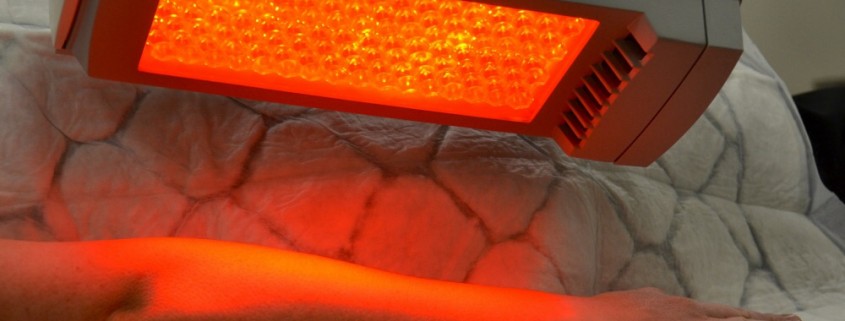Bright lights in skin cancer treatment
Having introduced photodynamic therapy (PDT), a novel treatment for certain types of skin cancer, to the NHS practice in Oxford, I am delighted to announce the new PDT service is now available in my private practice at The Manor Hospital.
We have now been treating patients since November 2013. During this time we have treated over 100 skin cancers and we can now see the clear advantage this treatment delivers. We are able to treat any patient on any given day at any time convenient to them. The convenience factor is excellent, the speed of healing from treatment is faster than any other treatment and linked with efficacy of treatment, this really is a real win win treatment option for patients.
How PDT works?
PDT relies on the concept that tumour cells want to grow, much more so than benign cells. Any growing cell will need to take on ‘raw materials’ in order to enlarge. The active chemical in the PDT cream is aminolevulaenic acid (ALA). This ALA looks very appetising to a growing cell and it absorbs, accumulates, as much of ALA as possible in preparation for growing. However there is a clever twist to the ALA molecule, the ability to change, when activated by light. Once activated it changes into the toxic product protoporphyrin IX (PPIX). Thus tumour cells full of ALA, after activation by light, become full of PPIX which is toxic to the cell resulting in cell death. This explains the efficacy of PDT in selectively killing tumour cells whilst minimising any change to healthy cells.
PDT treatment in Oxford
Each treatment visit comprises of two components, which takes about 3 1/2 hours in total to complete.
1. Application – Firstly, the area for treatment is marked and the Metvix cream applied and a dressing placed to cover the area.
3 hours need to pass to allow time for the cream to be absorbed into the skin.You are free to leave the hospital durine, alternatively WiFi and refreshments are available if you prefer to stay within the hospital.
2. Activation – Once the cream has been absorbed, the dressing is removed and the excess cream cleared from the skin. The treatment area is then placed under the treatment lamp for approximately 12 minutes. This process activates the cream, making it toxic to the cells that have absorbed it, namely the tumour cells. After treatment a simple dressing is applied.
The treatment is repeated the following week for skin conditions that require two treatment sessions.
To book an appointment for skin cancer screening please call 01865 790297, drop me an email at Oxford.dermatology@icloud.com, or complete the contact form on the appointments page of this website.



